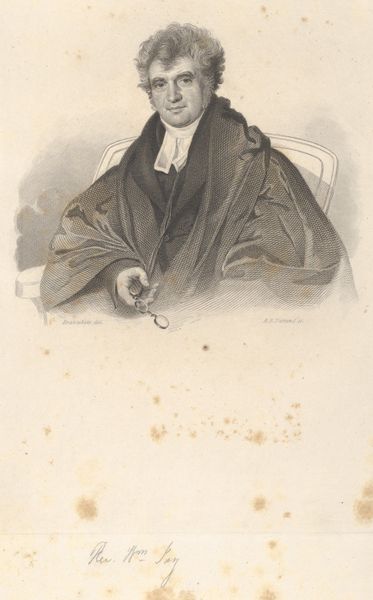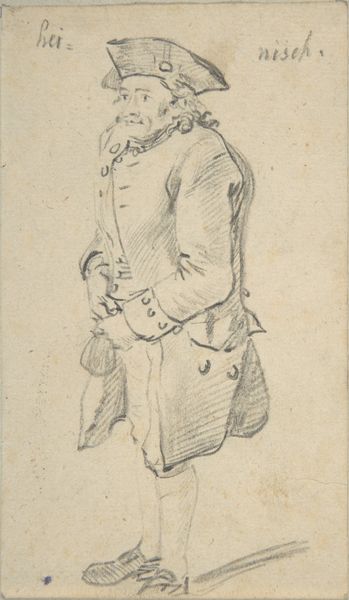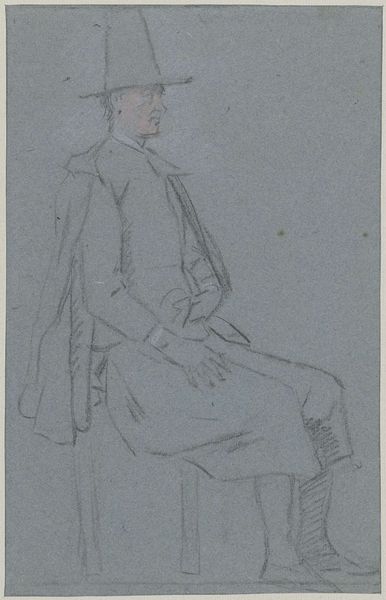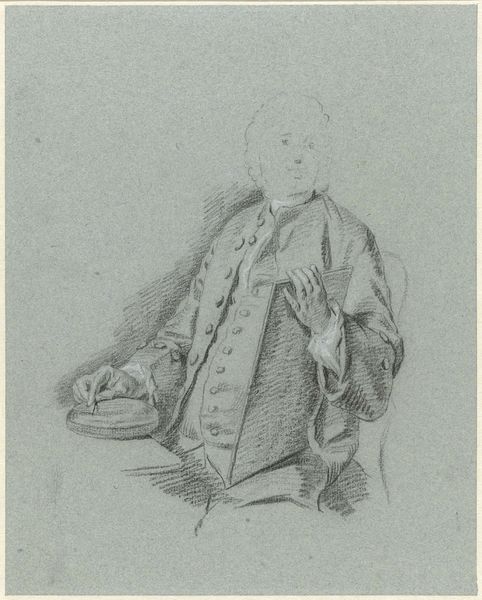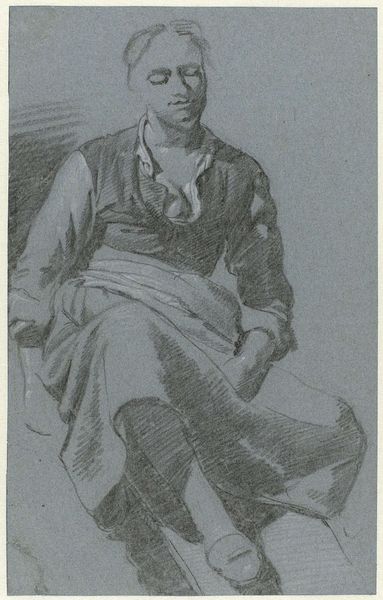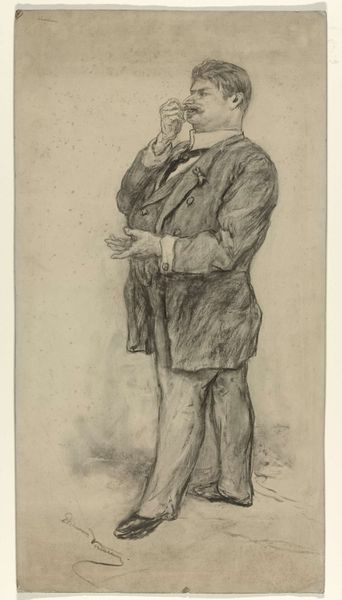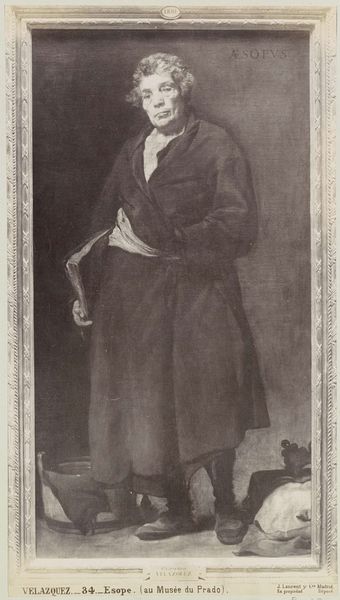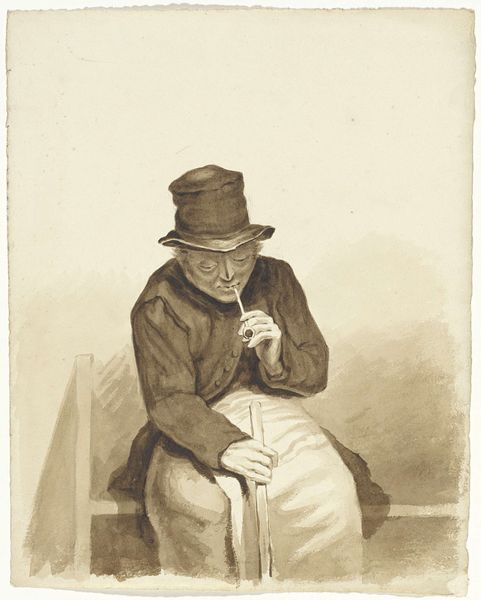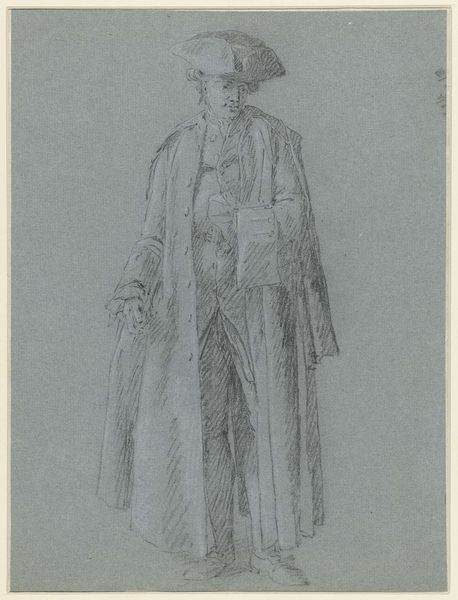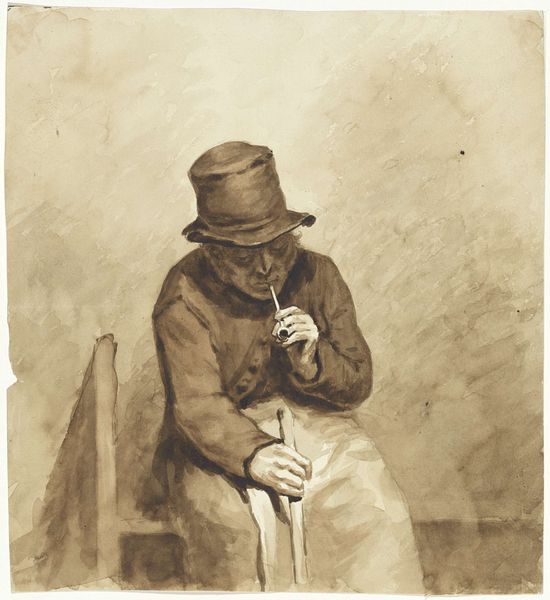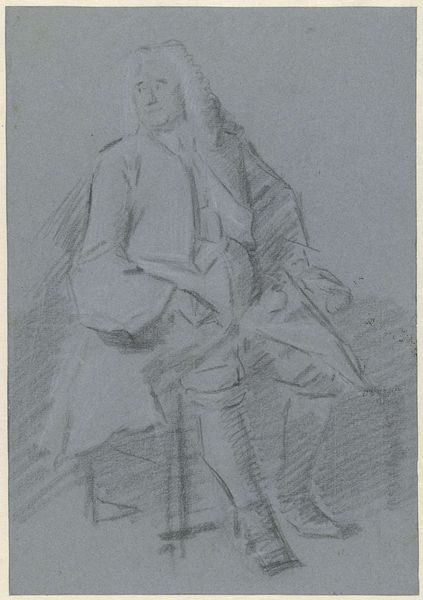
Portret van een onbekende man, het hoofd niet getekend 1774 - 1837
0:00
0:00
drawing, charcoal
#
portrait
#
drawing
#
pencil sketch
#
charcoal drawing
#
pencil drawing
#
romanticism
#
portrait drawing
#
charcoal
#
academic-art
#
portrait art
Dimensions: height 435 mm, width 325 mm
Copyright: Rijks Museum: Open Domain
Curator: Let’s spend some time with this fascinating drawing by Charles Howard Hodges. It’s entitled "Portret van een onbekende man, het hoofd niet getekend," or "Portrait of an unknown man, the head not drawn." He worked on it between 1774 and 1837. Editor: My immediate reaction is, "incomplete." It feels ghostly and very deliberately so. It's also incredibly… buttoned-up, isn’t it? All those tightly fastened buttons on the waistcoat and jacket. But that emptiness above is very strange and really quite sad, I think. Curator: Hodges' technique is certainly worth noting here. Look at the texture he achieves with charcoal and pencil – especially in the folds of the fabric. It really elevates the materiality of clothing, doesn’t it? It’s more than just representation; it’s almost a celebration of textile production and the status the sitter must have held. Editor: I'd agree—and it's very of its time. The careful attention paid to the sitter's clothing—and particularly his status conveyed through details like his tailoring, the quality of his shirt. The social commentary becomes more pronounced by that missing head—that erasure. We’re left with pure signifiers of class and... well, I suppose we bring ourselves, our own face, to complete the image, don't we? Curator: Exactly! Maybe the anonymity is key. Was this portrait never finished due to the sitter’s…disgrace, shall we say? Or death? I think the fact that this wasn't painted might say something too, something that perhaps elevates painting on a higher sphere during this time. Was painting better able to reveal one's identity more fully? It makes me wonder about identity, social roles, and visibility, or perhaps a lack of visibility back then, versus now. I love those open questions an artwork like this brings! Editor: Ultimately, I’m left thinking about all the hands that went into creating those clothes, all that invisible labor against the presumed nobility of the wearer. That juxtaposition fascinates me, and, dare I say, indicts this portrait that otherwise would've gone unnoticed!
Comments
No comments
Be the first to comment and join the conversation on the ultimate creative platform.
